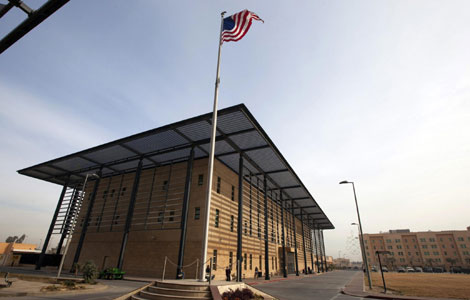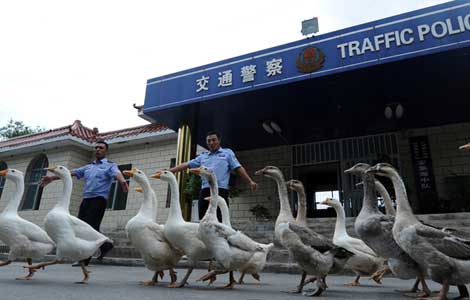
Reclaiming 10 percent import share by 2015 the target: council report
Chinese experts are urging the United States to loosen restrictions on high-tech exports to China to balance bilateral trade and spur the US economic recovery.
The call comes as the US has pledged to work hard to expand its shipments to China and to reclaim 10 percent of China's total imports by 2015.
Although China remained the US' third-largest export market in 2012, buying goods from the US worth $109 billion, Washington must fight harder to increase its share of that total, the US-China Business Council said in two reports on Thursday.
From 2003 to 2012, US exports to China rose by 294 percent, up nearly $81 billion. But the US share in China's total imports has fallen to 7 percent from 10 percent in 2000 and it "significantly" trails the European Union, Japan and South Korea in exports to the country.
Chinese trade experts attribute the drop to Washington's restrictions on high-tech exports to China. "The key problem is that the US has competitiveness in high-tech products but restricted the exports to China, which forced China to diversify its imports from the EU, South Korea and other sources," said Wang Jun, an expert with the China Center for International Economic Exchanges.
"The US should relax its guard against China. Easing the export restriction will not only balance bilateral trade but also boost the US economic recovery."
Long Guoqiang, director of foreign economic relations at the State Council Development Research Center, agreed, saying that besides the restrictions on exports China has seen a change in its domestic consumption demand in the past decade.
In that time, China has witnessed a rapid rise in imports of primary commodities, while the US has strengthened exports of agricultural and high-tech products, along with chemicals, to China, he added.
Constrained US exports to China and China's robust exports to the US have resulted in a large trade surplus for China, which rose 8.5 percent year-on-year to $218.92 billion in 2012.
At the same time, Washington has continued to accuse Beijing of manipulating the yuan.
Addressing the US' ability to compete with other countries on exports to China, the report on US Congressional district exports to the country said that China acts as a primary processing area in East Asian supply chains routed through Japan and South Korea. This relationship accounts for strong imports from those countries, it added. But it said that China's imports from the European Union, which "far outpace those from the United States", provide a more useful benchmark for comparing US export competitiveness in China.
The business council's annual report said the US could increase its sales and global competitiveness while providing China with innovative products and services to regain the 10 percent import share by 2015.
"As its economy and middle class continue to expand, China will continue to play a significant role as an export market for a wide selection of US goods," the report said.
It also said that US exports to China "remain a bright spot for US companies". Although annual growth in US exports to China slowed to 6.5 percent last year due to China's slowing economy, annual average growth over the past decade was nearly 17 percent, according to the report.
"Strengthening exports to China will greatly benefit the US economic recovery, as China is not only a leading export market for the US but also the fastest growing one," Long said, calling for the establishment of a China-US free trade agreement.
"If the US really wants to gain from the Chinese market, the strategic move is to launch a bilateral FTA," he said.
Wang said such an agreement between the two countries will remove barriers in trade and investment.
Charlie Welsh, editor-in-chief of XportReporter, an online business-information journal that covers the export market, said the council's report underlines how essential it is that more US companies look to faster-growing foreign markets like China for growth opportunities.
"While absolute numbers look impressive, the fact remains that US companies, particularly in the middle market, continue to let their lunch get eaten by their more proactive peers in Europe, Japan and elsewhere," Welsh told China Daily.
"American companies remain a statistical anomaly insofar as they, unlike other advanced economies, do not look to foreign markets as a substitute for lower domestic growth. That is why the US' share of imports into China has fallen to 7 percent from 10 percent in 2000," he said.
The business council's report on US exports to China by state shows that California led last year, with exports worth $13.6 billion, a 156 percent rise from 2003 to 2012.
It was followed by Texas, with exports worth $10.1 billion and growth of 229 percent. The third-largest state exporter was Washington, with $7.9 billion in exports and growth of 239 percent.








